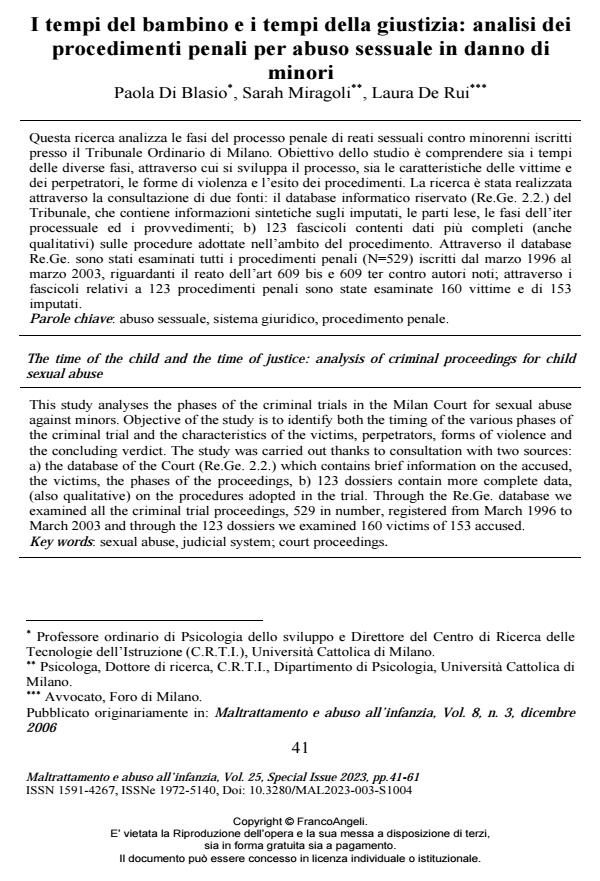The time of the child and the time of justice: analysis of criminal proceedings for child sexual abuse
Journal title MALTRATTAMENTO E ABUSO ALL’INFANZIA
Author/s Paola Di Blasio, Sarah Miragoli, Laura De Rui
Publishing Year 2024 Issue 2023/3 Suppl.
Language Italian Pages 21 P. 41-61 File size 233 KB
DOI 10.3280/MAL2023-003-S1004
DOI is like a bar code for intellectual property: to have more infomation
click here
Below, you can see the article first page
If you want to buy this article in PDF format, you can do it, following the instructions to buy download credits

FrancoAngeli is member of Publishers International Linking Association, Inc (PILA), a not-for-profit association which run the CrossRef service enabling links to and from online scholarly content.
This study analyses the phases of the criminal trials in the Milan Court for sexual abuse against minors. Objective of the study is to identify both the timing of the various phases of the criminal trial and the characteristics of the victims, perpetrators, forms of violence and the concluding verdict. The study was carried out thanks to consultation with two sources: a) the database of the Court (Re.Ge. 2.2.) which contains brief information on the accused, the victims, the phases of the proceedings, b) 123 dossiers contain more complete data, (also qualitative) on the procedures adopted in the trial. Through the Re.Ge. database we examined all the criminal trial proceedings, 529 in number, registered from March 1996 to March 2003 and through the 123 dossiers we examined 160 victims of 153 accused.
Keywords: sexual abuse, judicial system; court proceedings.
Paola Di Blasio, Sarah Miragoli, Laura De Rui, I tempi del bambino e i tempi della giustizia: analisi dei procedimenti penali per abuso sessuale in danno di minori in "MALTRATTAMENTO E ABUSO ALL’INFANZIA" 3 Suppl./2023, pp 41-61, DOI: 10.3280/MAL2023-003-S1004